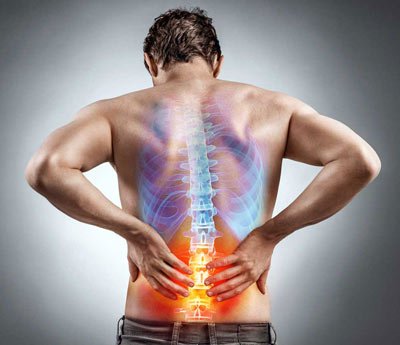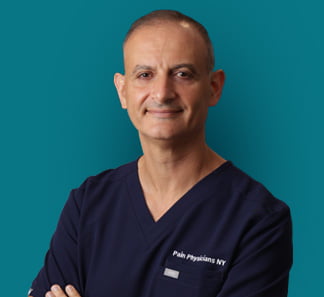A pulled back muscle seems fairly common, and low-level strains and sprains happen frequently. But if you suffer a severe injury to your back, you need to get it checked out quickly. Without proper care, a pulled muscle in your back can get worse, to the point that you neconed surgery to repair it. Don’t let that happen! Visit NY pain management to get the best care in a comfortable environment from nationally recognized pain doctors.
A pulled back muscle actually refers to a muscle strain. Strains affect either muscles or the tendons that are connected to a bone. The two common most circumstances in which muscle strains tend to occur include:
- Stretching your back muscle beyond its limits
- Forcing your muscle to contract more than it’s used to
In either case, you’re left with back pain. There are different degrees of a pulled back muscle. A minor strain means that you’ve managed to stretch or tear at least some of the fibers in a single, specific muscle. If you have a more severely strained muscle, it’s possible that you’ve actually torn a muscle. A torn muscle can make it difficult to move or function properly without pain.
The Grading Curve
The pain specialists in Manhattan at New York pain management center are familiar with how badly a pulled muscle in your back can hurt. In fact, medical experts categorize the extent of your tear into three grades, from grade I to grade III. Depending on the severity of the tissue damage in your muscle, your doctor rates your condition accordingly:
- Grade I reflects a mild strain. In a grade I strain, you’ve managed to stretch or tear just a few fibers in your muscle. Even though this back injury is painful, your muscle is still able to move normally, without any noticeable effect on your strength or range of motion.
- Grade II strains involve a greater number of muscle fibers. This type of pulled back muscle causes more back pain. The affected area of your back may be surprisingly tender. You also may notice a minor amount of swelling or bruising. A marked loss of strength accompanies this injury.
- Grade III is by far the most painful and severe pulled muscle in your back. If you have a grade III strain, your muscle has torn completely. You may have experienced a popping sensation when the muscle actually separated from the tendon. A grade III strain is a serious injury that results in complete loss of your ability to use your injured muscle. The pain associated with this injury may be unbearable. You may notice a sizeable gap or dent where your muscle has torn completely in two.

All athletic activities carry a risk of muscle strain. But the risk is significantly higher for contact sports and activities that call for quick starts, such as tennis and basketball. Getting a pulled muscle in your lower back or suffering from a lower back sprain — which come from damage to a ligament — are common injuries for athletes. But anyone can incur pulled back muscle injuries from everyday activities like bending to tie your shoe or simply stepping off of a curb.
Problem Solving for a Pulled Back
The best-rated back pain doctors in New York are available at Pain Management NYC to diagnose and resolve any pain you’re experiencing. Treatment for a pulled back muscle, including a back sprain, begins with a thorough physical examination. Your injury doctor accesses your medical history, as well as the circumstances surrounding your muscle strain.
For minor back sprains and grade I strains, your doctor may first recommend the RICE method — rest, ice, compression and elevation. If that doesn’t work to relieve your pain or your doctor’s confirmed that you’ve suffered a grade II or grade III muscle strain, you need a stronger course of treatment for a pulled back muscle. Fortunately, you’ve come to a pain control clinic that offers many types of minimally-invasive procedures.
How to Treat a Pulled Muscle in the Back
Your pain doctor develops an individualized treatment plan to treat your pulled muscle in the back, whether it’s causing you pain in your upper back, mid-back or lower back. If your injury severely limits your mobility, your doctor may recommend that you immobilize the back muscle, which can be achieved with bed rest, an inflexible cast, a removable brace or possibly a wheelchair. Rest is usually the first course of treatment.
When you deal with the best back pain specialist in Manhattan, you’re given over-the-counter or prescription pain medicine to control the pain while your muscle heals. If restricting your movement doesn’t aid in healing your muscle, the last resort is to surgically repair it. But that course of treatment requires extensive rehabilitation, including physical therapy, to facilitate a full recovery.
Now that you know how to treat a pulled muscle in your back — and how serious your injury can be — don’t delay if you feel you’ve suffered a pulled back muscle. If you don’t have it treated, it may get worse, progressing up the grade scale until you need surgery. Don’t let that happen. Contact Pain Management NYC today.

Boleslav Kosharskyy, MD, is a top-rated, best-in-class interventional pain management doctor. He is board-certified in Anesthesiology, Interventional Pain Medicine, and Palliative Care.
Dr. Kosharskyy is an Associate Professor of Anesthesiology and Rehabilitation Medicine at Albert Einstein Medical College. He’s also the Associate Medical Director of Pain Medicine and Director of Anesthesia for the Joint Replacement Center at Montefiore Medical Center and Albert Einstein Medical College.
He is an active member of the American Society of Anesthesiology (ASA), the American Society of Regional Anesthesia and Pain Medicine (ASRA), and the New York State Society of Anesthesiologists (NYSSA)
